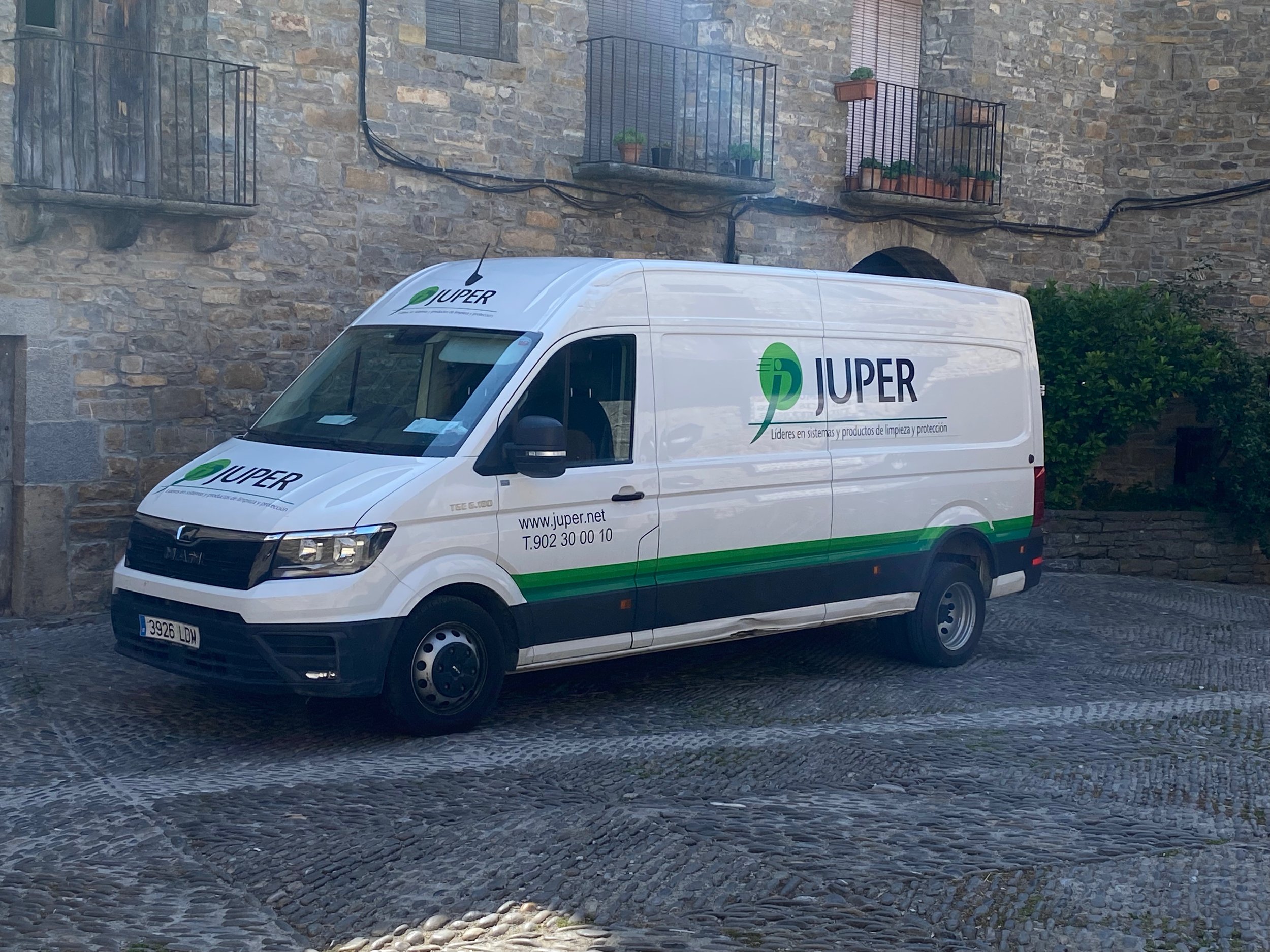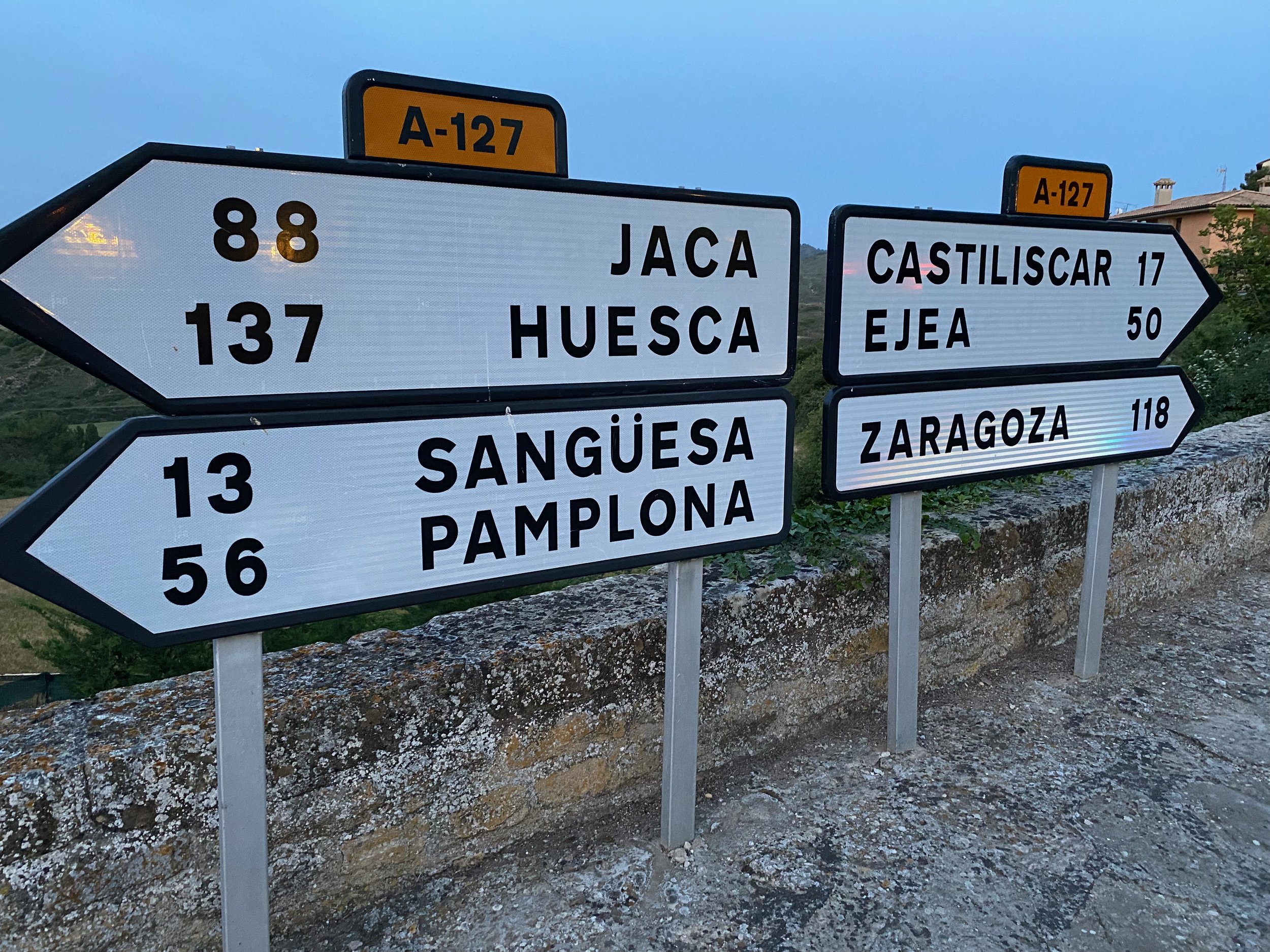Art and Travel
Sketching near Siwa, a desert oasis in southern Egypt.
At times (though not nearly often enough!) art takes me on a real, physical journey, and I find myself far from home in every sense, meeting people, seeing places and experiencing things I never expected. Yet combining art and travel has its own set of challenges!
Sketching from my hotel room in Rajasthan, India.
Subjects that constantly move.
When painting overseas it is almost guaranteed that scenes will constantly change. A cow will walk into the scene, a bus may park and block the view, people group, move around, then disappear.
This van parked slap-bang in front of the scene I was painting in Spain!
The light may change rapidly. It can be extremely challenging to work on a busy street with the never-ceasing blaring of horns, buses, smoke, fumes and dust.
If you are able to develop the ability to work fast and confidently you can capture a scene in twenty minutes in pencil and paper, then take several good quality photos with either a digital camera or an iPhone, then go back to where you’re staying and complete the painting from three sources: memory, a sketch and a reference photograph.
Finding the lightest, most mobile art supplies to travel with.
I have experimented with oil pastel, watercolor pencils, watercolor crayons, pencil, ink and acrylics in my search for the “perfect” medium for travel. But I keep returning to watercolour.
You will find watercolour is great way to paint and travel. Because it lends itself to both working fast yet capturing details, you will be able to capture spontaneous sights and events. It is both easy to carry and set up and, because it is fast drying, you will be able to move on within minutes (unlike oil or acrylics!) All you will need is access to water when you arrive or bring some with you.
All my clothes and painting supplies, packed and ready to go in one backpack. My half sheets of watercolour paper are in the blue plastic bag to protect them as I travel.
Everything I needed to travel and paint, arranged on a table our $15-a-night hotel in Delhi: a pencil case filled with drawing supplies, a plastic watercolour palette, a small red bag with extra tubes of paint and my brushes which are protected by a bamboo wrap. This combination is easy to carry, light, not smelly or messy like oil paint, pastels etc.
Everything I needed to travel and paint.
My painting supplies ready to fit into the shoulder bag.
More than 30 tubes of paint—way too many! Count them!
Try to reduce the number of paints you take to about 12. This will mean less to carry and you will be able to mix colours with more confidence. On one of my trips to India, I had worried that I would run out of the one “essential” colour needed to complete a painting. This highlights the importance of learning to mix colours effectively with a limited palette!
One of the most effective, lightest and simplest tools to take while going out sketching or painting? Yup, the humble pencil and sketchpad. Never leave home—or your hotel room—without them. That may be all you need.
Time restraints.
I often feel incredibly pressured to “just paint something!” because time is so limited in a particular place. I catch myself thinking: “I am only here for two hours; I’ve got to paint something! I can’t waste this moment, this once-in-a-lifetime opportunity!”
Try not to give in to the pressure of jumping into painting too fast while neglecting to find a subject that “works” and that you are really excited about. If you can, remember to quickly carry out small sketches to check that the composition holds together. Most important; relax and enjoy. I really can’t emphasis enough that becoming stressed is the worst thing for an artist, because your best work will usually be when you “get into the zone” and just enjoy the journey!
Travel can be exhausting.
On a recent trip to Morocco just getting around took up almost the whole day. Often we started our loading the van at about 6am and got to our next destination at six in the evening. Did I feel like painting after that? Not so much. A cold beer and a good meal was top on my mind.
So many places to see—and so little time to paint!
You will often experience an inner struggle—do I make the effort to go out and sketch or do I just relax and recover from the day’s travel? Plan your day and try to make sure you have both time to relax and time set aside for painting. If you can, find a good balance between travelling and painting. I recommend a 3:1 ratio—three days settled in one place for every day on the road, train or plane.
Painting “by committee”.
In many countries people seem to think that art is a democratic process! Everybody has a say and an opinion about your work. In India people will stop and stare, and sometimes gather around in a circle until the subject you are trying to paint is completely out of view!
You may find it annoying when people offer advice, “Hey, you should put him in the picture”, pointing to their best friend, or worse, stare curiously at your art as if they have totally no idea what you are actually painting! With time you will see that this is nothing more than friendly interest and curiosity. You will discover that painting is a great way to meet people and break down cultural barriers (much less threatening than an intrusive camera). As time goes by, you will learn to worry less about what others think and stop trying to “justify” your art to those around you. Instead, you will find that you are able to focus on enjoying the painting experience—and getting to know the local people.
Practical challenges.
The difficulties of traveling and painting include the risk of watercolour paper getting torn or damaged during repeated bus or train journeys and paint that leaks from tubes. The latter has been especially bad with Daniel Smiths, with the tops breaking and the painting coming out of tubes of paint. On my last trip, every time I moved to a new location, I had to individually wrap those tubes in paper towels to stop them leaking onto the other tubes, onto my fingers and then onto the paper! The worst pigments are the highly staining pigments like Thalo blues and greens—once they get onto a clean sheet of paper they are impossible to lift off.
Paint that leaks from tubes during travel.
Other challenges include sweat dripping from your face or dirt from your hands getting onto the paper. In some countries dust is pervasive and gets onto everything—including your freshly laid wash of watercolour! Rapid changes in temperature, from way-too-hot to very cold within a few minutes, can affect both the drying time of wet paint and test your resolve to keep working, especially at high altitude in countries like Nepal. All of these situations are where determination to complete your sketches comes in.
Coming to terms with the reality of poverty.
It can be shocking to witness the level of hardship experienced in many parts of the world. It may feel indulgent to paint in places dogged by pervasive poverty. Like me, you may struggle to sketch while those around me work 14-hour days just to survive. In poor countries it can difficult to reconcile the fact that you paid more just to fly to their country than they make in a year of hard work under the hot sun. For many people a “holiday” is completely unheard of. You may feel that even if you give some money…many others remain untouched.
Poverty can confront our values and assumptions about life. You will see many people like this on the streets of developing nations.
This woman in New Delhi worked into the night carrying bricks—yet still had time for a smile every time she saw me!
What to do? We all know stories of children being purposely disfigured to improve begging opportunities, or money given to beggars going directly to gangs.
One idea is to give money to organisations that work in local communities to support long-term development. Another is to buy packs of school books, pencils and erasers to give directly to children who, in many cases, need to bring their own supplies to school. A third is to travel with groups like Intrepid, who take small groups “off the beaten track” to visit handicraft initiatives that generate income for local communities.
YOUR OPTIONS TO travel and paint.
Option one: is to travel by yourself or with your spouse or a friend, carrying your art supplies with you. The advantage is that you have complete control over where and when you travel and your painting schedule. The disadvantage is that a huge amount of time can be taken up figuring out transportation and accommodation. How do you get around, find a good place to stay and get to the train station…all with limited language?
Option two: You could go on a “traditional” tour, with large numbers of people on a bus or cruise ship. Everything is highly organized, but you have very little control of your time or itinerary and are surrounded by people, even when you get somewhere you want to paint.
Option three: Painting holidays, on the other hand, involve traveling to one place then settling into your accommodation. Accommodation is usually in old farm houses or chateaux in beautiful countries like Spain, France and Italy. Each day trips are arranged to surrounding locations. More and more I think this is the most effective way to combine painting and travel. You are in a positive, supportive environment with small groups of people interested in painting. Your schedule is organized but includes plenty of free time to get creative. There are daily “demos” and opportunities to meet local artists. You will have to do some research before signing up. Some of my favourite painting holidays are run in Croatia by Slikamilina, a company founded by Lynda Milina.
Option four: Is to sign up with organisations like Intrepid, who take small groups of no more than 12 people “off the beaten track”. On tours like this, you are taken around by local guides, visit handicraft initiatives that generate income for local communities and experience first hand the cultural life of the people . Again, there may not be as much time as you like to paint.
These local craftsmen generate into for their families - and keep traditional skills alive.
Traditional Moroccan tagine.
What could be better than eating traditional home-cooked food—and knowing that at the same time you are helping the family?
Well, those are my thoughts. I would love to hear from you about what you have found to be the best way to travel and paint!
Painting on top of Mt. Sinai in Egypt, where Moses received the Ten Commandments. (We started up on foot at 4am for the five hour climb to the top—and left to come back down at 10am, before it got too hot!)
















